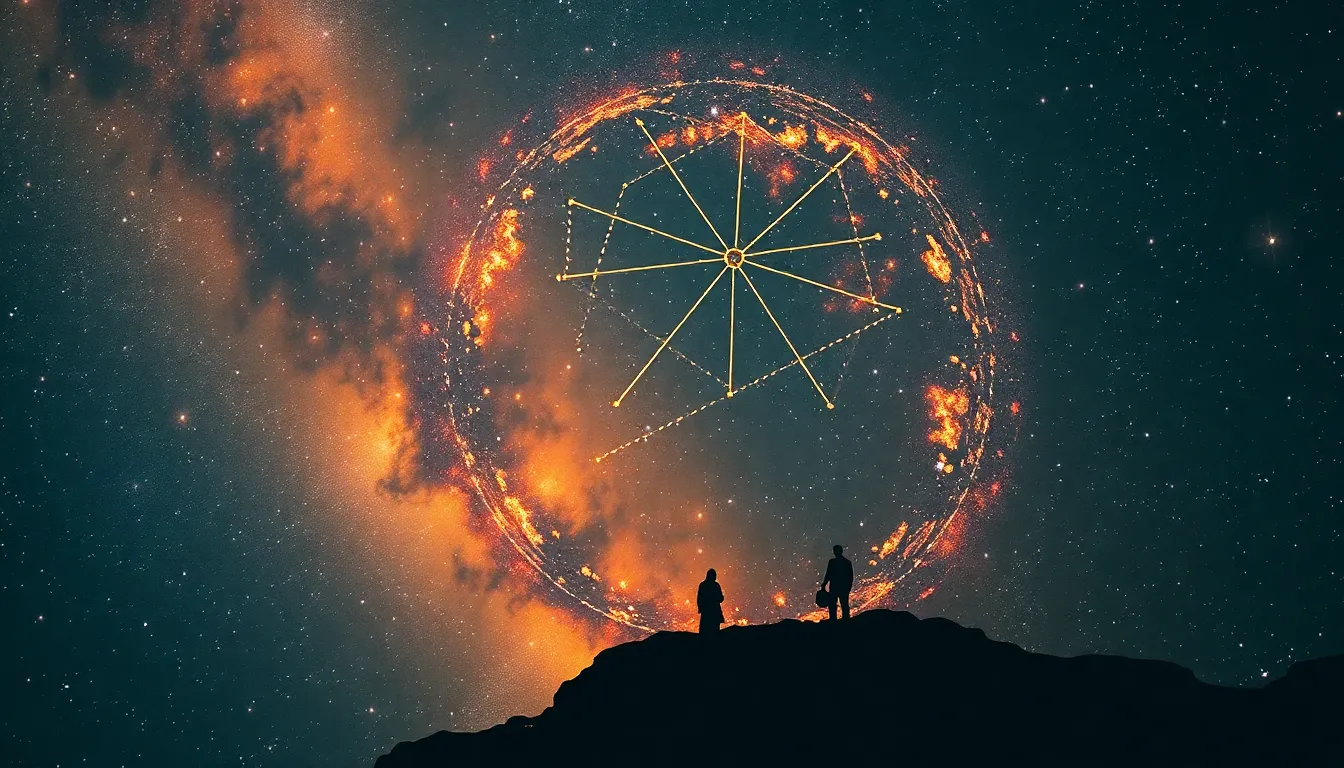The Celestial Storytellers: Myths of Stars and Their Significance
Introduction: The Stars as Storytellers
Throughout history, stars have served as the backdrop for human storytelling, offering a canvas upon which cultures have painted their myths, legends, and beliefs. The night sky, with its twinkling lights and vast expanse, has inspired generations to look upward and ponder their existence. Myths surrounding the stars are not merely fanciful tales; they serve as a vital link between humanity and the cosmos, providing insight into our cultural identities, values, and understanding of the universe.
A Historical Perspective: Ancient Civilizations and the Night Sky
Ancient civilizations were deeply influenced by the stars. Cultures worldwide observed celestial bodies and created narratives that reflected their understanding of life and the universe. Here are some notable examples:
- Egyptians: The Egyptians saw the stars as manifestations of their gods, with the constellation Orion representing Osiris, the god of the afterlife. The Great Pyramid of Giza is aligned with the stars, emphasizing their importance in Egyptian cosmology.
- Greeks: Greek mythology is rich with stories about the stars, with figures like Zeus and Hera represented in the constellations. The Greeks used the stars for navigation and to mark the seasons, intertwining astronomy and mythology.
- Mayans: The Mayan civilization placed great emphasis on astronomy, using the stars to create complex calendars. They associated celestial events with their deities and agricultural practices.
Constellations and Their Legends
Constellations are among the most prominent features of the night sky, each associated with its own set of myths. Here are a few notable constellations and their legends:
- Orion: Often referred to as the Hunter, Orion is depicted in various cultures as a heroic figure. In Greek mythology, he was a giant huntsman placed among the stars by Zeus.
- Ursa Major: Known as the Great Bear, Ursa Major has different interpretations across cultures. In Greek mythology, it represents Callisto, a nymph transformed into a bear.
- Cassiopeia: This constellation is named after the vain queen of Ethiopia in Greek mythology. Her story serves as a cautionary tale about pride and its consequences.
Cultural Variations: How Different Societies Interpret the Stars
Star myths vary widely across cultures, shaped by geography, environment, and societal values. Here are some examples of how different societies interpret the stars:
- Native American: Many Native American tribes view the stars as ancestors or spirits. For instance, the Lakota people see the Pleiades as seven sisters who represent unity and strength.
- African: In African cultures, the stars often play a role in oral traditions. The Dogon people of Mali have a complex astronomical system that includes knowledge of Sirius, which they believe was given to them by beings from the sky.
- Asian: In Chinese mythology, the stars are often associated with various deities. The story of the Cowherd and the Weaver Girl, represented by the stars Altair and Vega, is a famous tale of love and separation.
The Role of Stars in Navigation and Timekeeping
Historically, stars have been crucial for navigation and timekeeping. Before the advent of modern technology, seafarers and explorers relied on celestial bodies to guide their journeys:
- Stars like Polaris, the North Star, have been pivotal for navigation in the Northern Hemisphere.
- Celestial events, such as solstices and equinoxes, helped ancient cultures develop calendars that governed agricultural practices.
The Influence of Star Myths on Literature and Art
Star myths have had a profound impact on literature and the arts. Many authors and artists have drawn inspiration from celestial stories:
- Classical literature often references constellations and their associated myths, such as those found in Homer’s “Iliad” and “Odyssey.”
- Visual arts, from ancient pottery to modern paintings, frequently depict celestial themes, highlighting the beauty of the night sky.
Scientific Perspectives: The Intersection of Myth and Astronomy
Modern astronomy often intersects with ancient myths, revealing both connections and discrepancies. Scientific exploration has validated some celestial phenomena while debunking others:
- Myths often contain kernels of truth, such as the recognition of constellations, albeit interpreted through the lens of culture.
- Scientific advancements have provided explanations for celestial events, transforming myths into historical narratives about humanity’s quest for knowledge.
Contemporary Relevance: The Rebirth of Star Myths in Modern Culture
In today’s society, there has been a resurgence of interest in astrology and celestial storytelling:
- Social media platforms have popularized astrology, allowing individuals to explore their zodiac signs and the associated myths.
- Technology enables people to connect with the stars through apps that help identify constellations and celestial events.
Environmental Awareness: The Night Sky and Its Preservation
Despite modern advancements, the night sky faces significant challenges due to light pollution, which obscures our view of the stars:
- Efforts are underway to reduce light pollution and preserve dark skies, ensuring future generations can connect with the cosmos.
- Organizations advocate for the importance of the night sky in cultural heritage and environmental conservation.
Conclusion: The Enduring Legacy of Celestial Storytelling
The myths surrounding the stars remain an integral part of human culture, reflecting our shared experiences and curiosity about the universe. As we continue to look to the night sky, we find not only stories of our past but also inspiration for our future. The stars will always be storytellers, inviting us to explore the mysteries of existence and our place within the cosmos.



